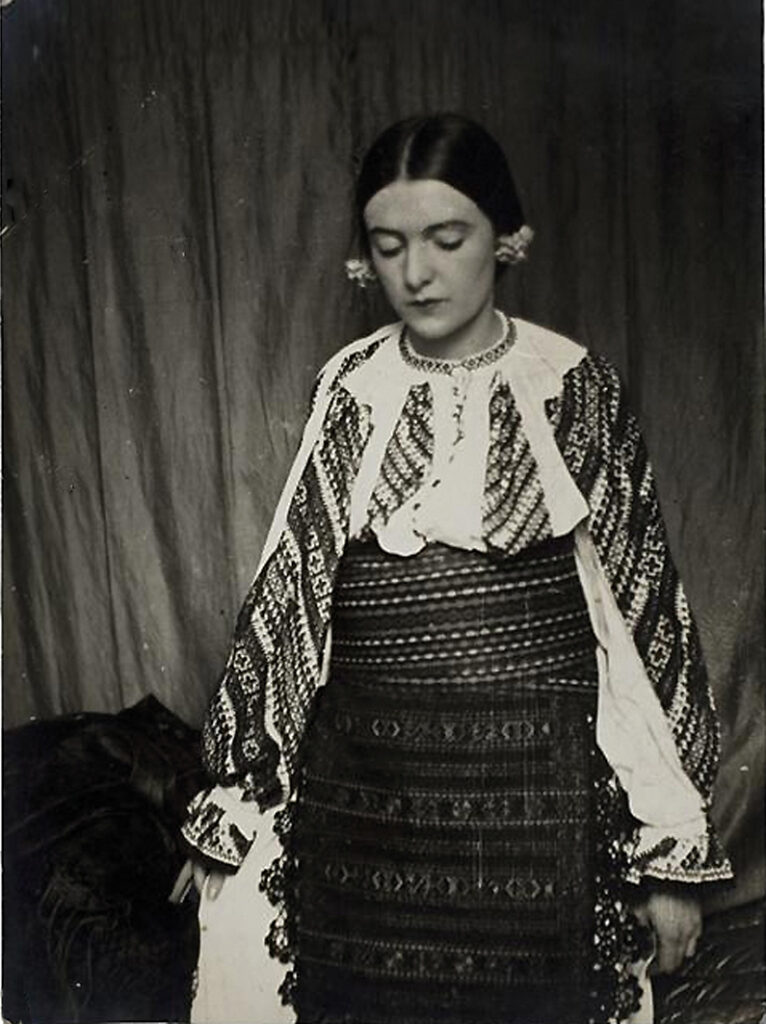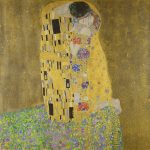
In the early 20th century, art was experiencing an explosion of new forms and ideas, particularly in the avant-garde circles of Paris. Amidst the revolution of creativity, an unlikely love story blossomed between Constantin Brâncuși, the Romanian sculptor known for his groundbreaking simplicity, and Eileen Lane, an aristocratic Irish woman. Their romance defied social norms and cultural expectations, intertwining their lives in ways that left a lasting impact on both of them. This relationship, though less famous than Brâncuși’s sculptures, had a profound influence on his work and worldview.
Constantin Brâncuși: A Sculptor Ahead of His Time
Constantin Brâncuși, born in Romania in 1876, emerged as a pioneer in modern sculpture. His works broke from the traditional methods of the time, focusing instead on abstraction and the essence of form. Known for masterpieces like The Kiss and Bird in Space, Brâncuși’s art stripped away unnecessary details, allowing pure shape to communicate deep emotion and universal truths. His creative process mirrored the simplicity he sought in life.
Brâncuși’s journey to Paris was not an easy one. He traveled mostly on foot, taking odd jobs along the way to fund his passage. Once in Paris, he joined the bohemian art circles and quickly gained recognition for his unique approach. However, beneath his exterior as a bold artist was a man who longed for connection and understanding. His deep passion for art was only matched by his desire for a meaningful personal relationship, something he would later find with Eileen Lane.
Eileen Lane: The Enigmatic Muse
Eileen Lane was a woman born into privilege, but her curiosity and passion for the arts led her down a different path from that of her aristocratic peers. Raised in Ireland, she had a natural affinity for the creative world. She traveled widely, engaging with artists and intellectuals across Europe. Paris, the hub of modern art, beckoned her, and it was here that she encountered Brâncuși.
Lane was known for her beauty and charm, but also for her sharp intellect and wit. She had an adventurous spirit, unafraid of the unconventional. Her encounters with Brâncuși were electrifying. The two came from vastly different worlds—he, the self-made artist from a small Romanian village, and she, the aristocrat accustomed to luxury—but their shared love for art bridged that divide. Together, they would embark on a journey that transcended their backgrounds, transforming them both.
A Meeting of Minds and Hearts
Their relationship began in Paris, a city buzzing with artistic energy. Brâncuși and Lane connected over their shared appreciation for the beauty and simplicity of life. Lane quickly became more than just a lover to Brâncuși; she became his muse. Her presence inspired some of his most celebrated works.
The bond between them was undeniable, but it was not without its challenges. Lane’s aristocratic family did not approve of her relationship with Brâncuși, viewing him as too unconventional and far beneath her social status. Nonetheless, Lane remained devoted to the sculptor, captivated by his raw talent and passion. She admired his singular vision and commitment to his craft, and in turn, Brâncuși valued her ability to see beyond the surface, to the depth of his soul.
In a letter to a friend, Brâncuși wrote, “She sees me, not as they do in the salons, but as I am.” This deep connection between them drove both their personal and creative lives. Brâncuși’s art flourished, while Lane found in him the freedom to explore new intellectual and emotional territories.
The Influence of Eileen Lane on Brâncuși’s Work
While much is made of Brâncuși’s artistic evolution, the role Eileen Lane played in his creative process is often overlooked. As his muse, Lane influenced several of Brâncuși’s sculptures. Her elegance, grace, and ethereal beauty found expression in his abstract forms. Works like The Endless Column and Sleeping Muse are said to reflect Lane’s presence in his life.
Lane encouraged Brâncuși to refine his artistic philosophy. She appreciated his vision of stripping down art to its bare essentials and supported him as he continued to push the boundaries of modern sculpture. Her influence was not only emotional but intellectual as well. Lane often engaged Brâncuși in discussions about philosophy, art, and the meaning of life, helping him articulate the ideas that would shape his work.
Their time together also inspired Brâncuși to explore themes of love and intimacy in his sculptures. His famous piece, The Kiss, reflects this shift. The piece shows two figures, their forms merging in a tender embrace, representing unity and connection. Many believe this piece encapsulates Brâncuși’s feelings for Lane—his desire for closeness, yet the simplicity of love as an elemental force.
The Struggles of Their Relationship
Despite their deep love for each other, the relationship between Brâncuși and Lane was fraught with difficulties. The most significant obstacle was the disapproval of Lane’s family, who could not understand why she had chosen to associate with someone so far removed from their social circles. Brâncuși, too, struggled with the constraints of societal expectations. He was a man committed to his art, sometimes at the expense of his relationships.
While Brâncuși found inspiration in Lane, his devotion to his craft meant he was often emotionally unavailable. Lane, though supportive of his artistic pursuits, began to feel the strain of his intense focus on his work. She longed for a deeper personal connection, one that could not always be fulfilled by Brâncuși’s art alone.
Their differences in background also played a role in the challenges they faced. Brâncuși, with his humble beginnings, often felt out of place in Lane’s aristocratic world. He once said, “I can create worlds with my hands, but in hers, I feel like a stranger.” This sense of alienation only added to the tension between them.
The Decision to Part Ways
As time passed, the strain on their relationship became too much to bear. Both Brâncuși and Lane realized that while their love for each other was real, their paths were diverging. Brâncuși was increasingly consumed by his art, pushing the boundaries of modern sculpture, while Lane began to seek a life outside of his shadow. They made the painful decision to part ways.
Their separation, however, was not a bitter one. Both continued to hold great affection and respect for each other. Brâncuși never spoke ill of Lane, and she, in turn, always spoke fondly of him. In an interview years later, Lane remarked, “Constantin was not just a sculptor; he was a force of nature. Our love was a beautiful chapter in both our lives.”
Brâncuși’s work following their separation took on a more introspective tone. His pieces became even more abstract, as if he were searching for the meaning of the loss he had endured. Lane, meanwhile, returned to Ireland, where she pursued her own intellectual and artistic interests, carrying with her the lessons and memories of her time with Brâncuși.
Legacy of a Timeless Love
Although their relationship did not last forever, the impact it had on both Brâncuși and Lane is undeniable. Brâncuși’s work continued to evolve, but the period of his life spent with Lane remained one of his most creatively fruitful times. Lane, too, carried the influence of Brâncuși with her throughout her life.
Their story reminds us that love, even when it is fleeting, can leave an indelible mark. Brâncuși’s sculptures stand as a testament not only to his genius but also to the emotional depth that Lane brought into his life. The romance between the sculptor and the aristocrat may not have been conventional, but it was one that pushed both to grow and evolve in ways they might never have imagined.
Conclusion: A Love That Shaped Art
The love story of Constantin Brâncuși and Eileen Lane is more than just a tale of passion; it is a testament to the transformative power of relationships. Their connection helped shape some of Brâncuși’s most iconic works and left a lasting legacy on the world of modern art. Despite the challenges and eventual end of their romance, Brâncuși and Lane’s relationship remains a powerful example of how love can inspire creativity, push boundaries, and forever change the course of one’s life.
In their own unique ways, they gave each other the greatest gift artists can offer: inspiration.




